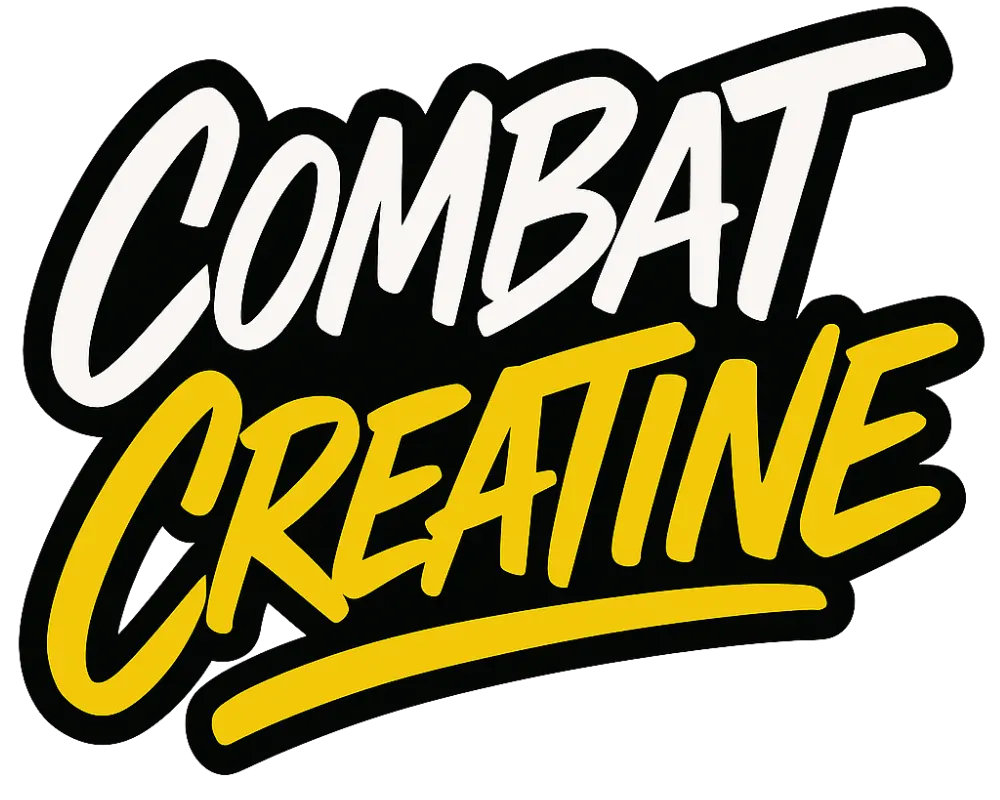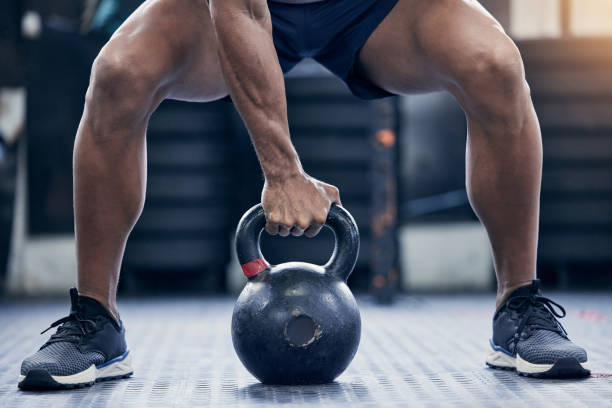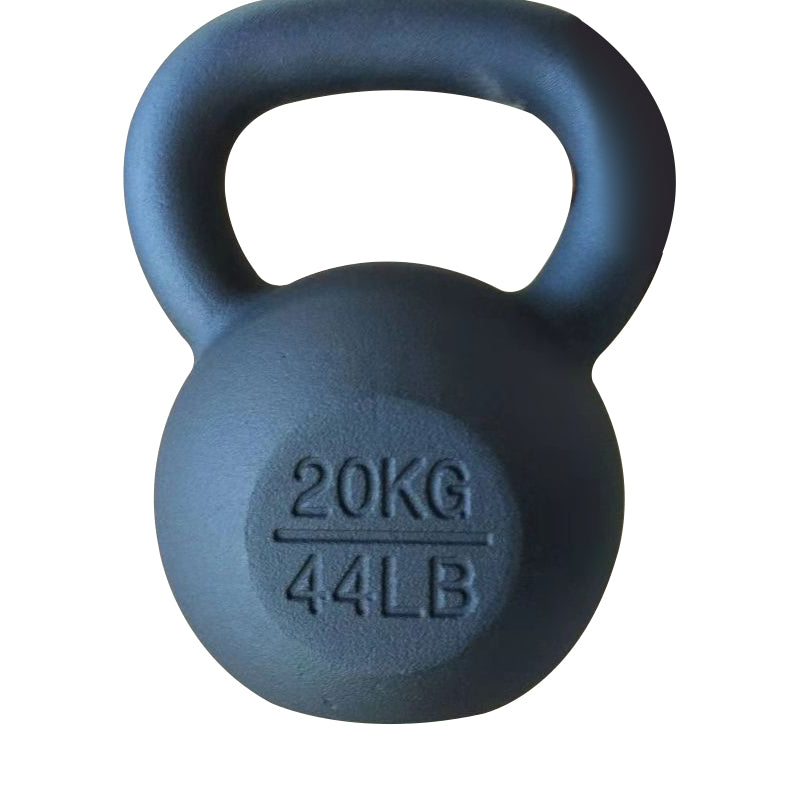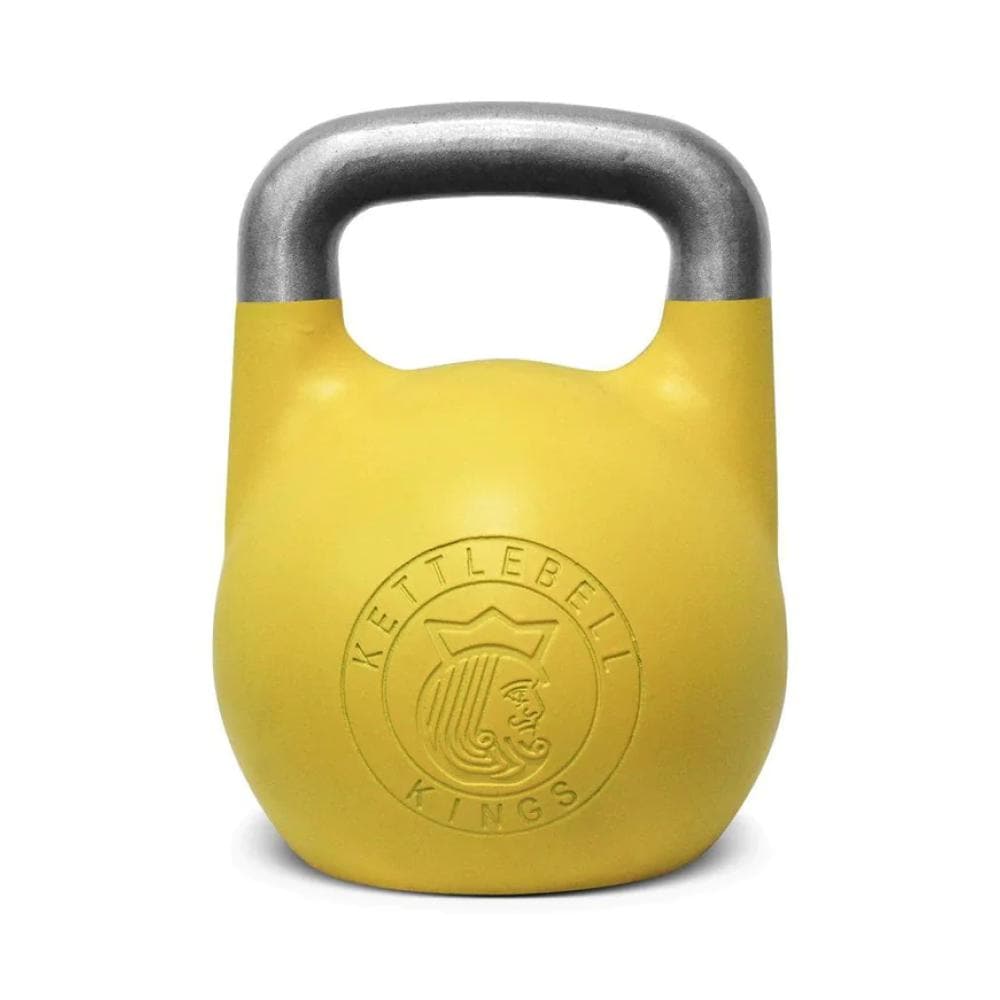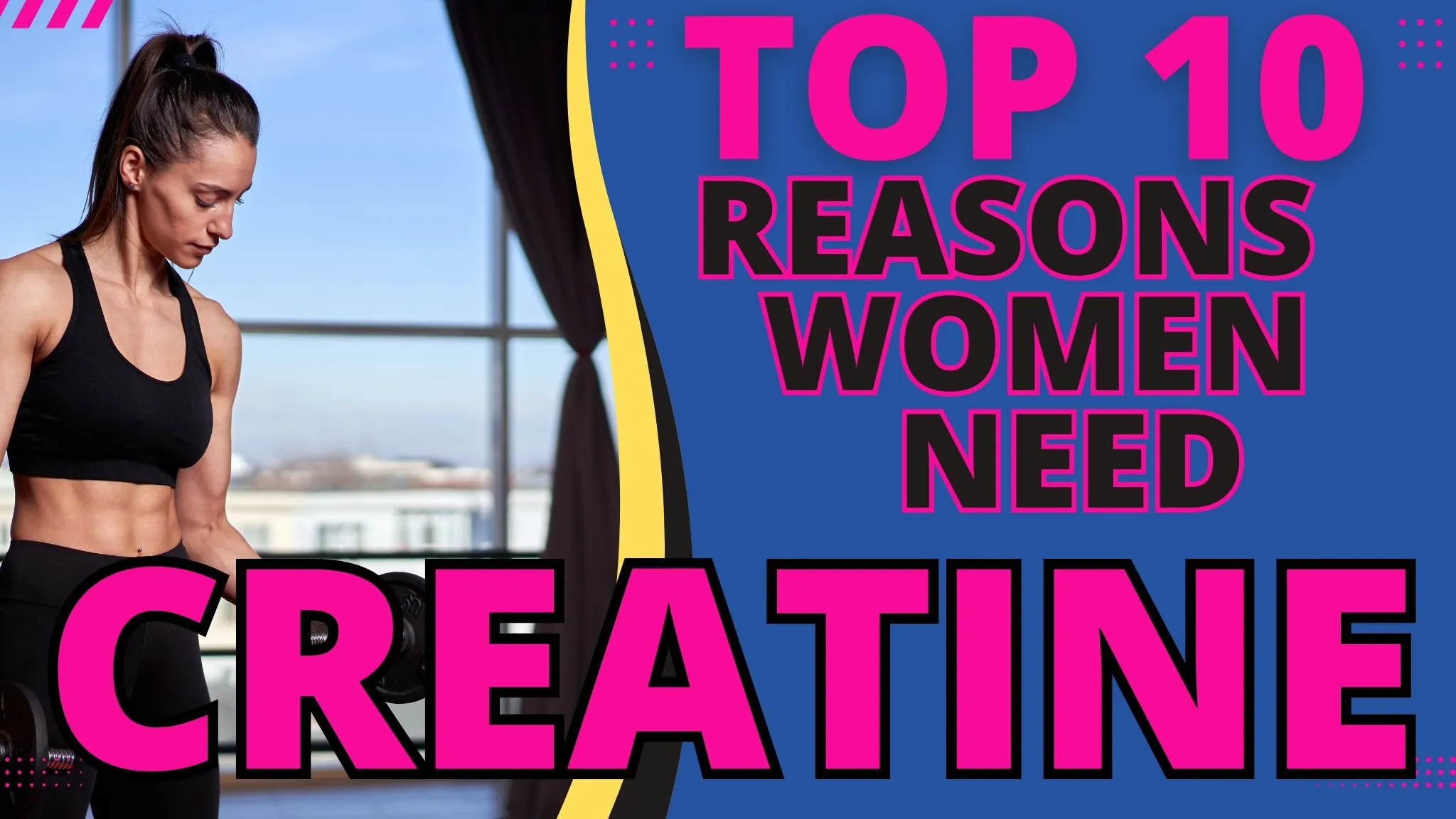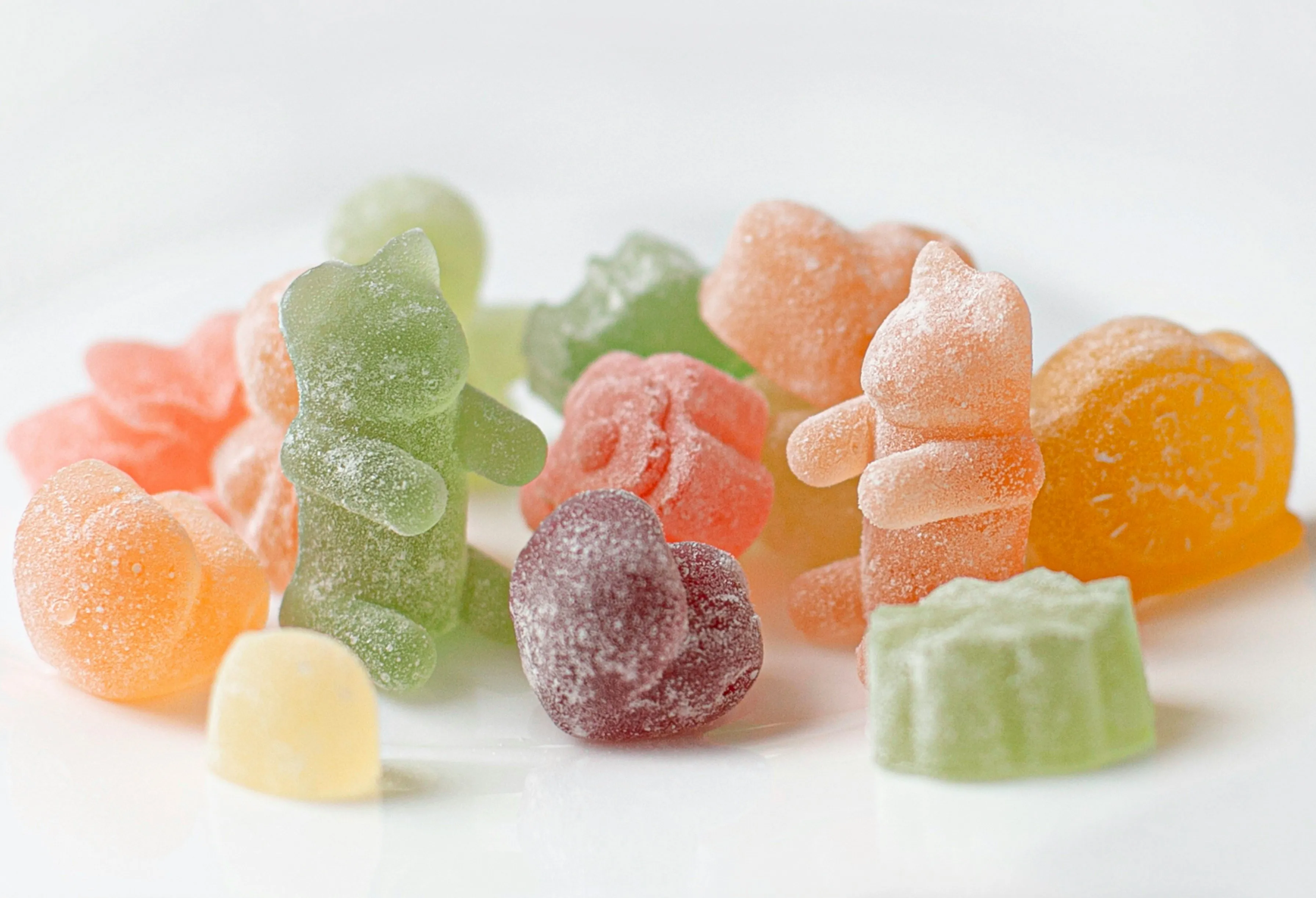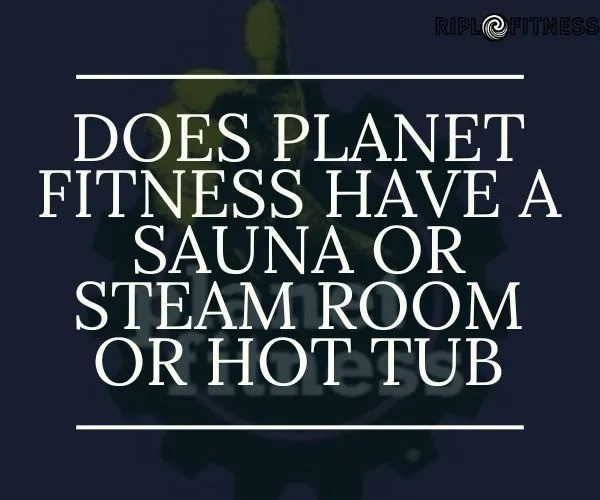How to Choose the Best Kettlebell Weight to Start With
What is the Best Kettlebell Weight to Start With for Beginners? 🏋️♀️💪
Kettlebells are all the rage these days, and for good reason!
These versatile weights offer a full-body workout that builds strength, endurance, and flexibility. But if you're new to the kettlebell game, choosing the right starting weight can feel like a daunting task. 🤔
Fear not, my friend! I've got your back with this comprehensive guide.

Selecting the proper kettlebell weight is crucial for beginners.
Go too heavy, and you risk injury or poor form. Too light, and you won't see the results you crave.
Getting it just right sets you up for success, allowing you to master the movements and build a solid foundation. 💯

What is a Kettlebell, Anyway?
Before we dive into weights, let's cover the basics. A kettlebell is a cast-iron weight with a handle on top, resembling a cannonball with a horn. 🦄
These unique pieces of equipment originated in Russia and have been used for centuries in strength training and weight lifting.
Kettlebells allow for dynamic, full-body movements like swings, cleans, and snatches, engaging multiple muscle groups simultaneously.
Plus, their off-center mass challenges your core stability and grip strength, giving you a killer workout in a compact package. 🔥
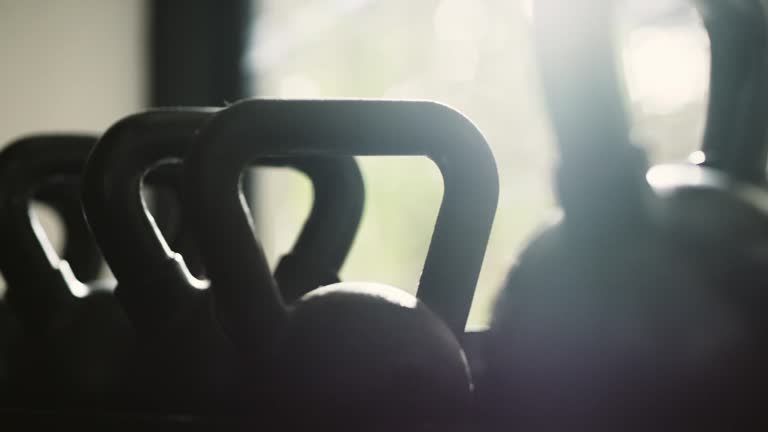
Factors to Consider When Choosing a Starting Weight
Not all beginners are created equal, my friend. Several factors come into play when selecting your first kettlebell:
🏋️♀️ Fitness Level and Experience: If you're new to weight training, start lighter. If you have some experience under your belt (or dumbbell), you can go a bit heavier.
👯 Sex: Generally, women begin with lower weights than men due to differences in muscle mass and strength levels. But don't let that stop you from pushing yourself!
🎯 Goals: Are you training for muscle gain, fat loss, or general fitness? Your goals will influence the ideal weight range.
⚖️ Body Weight: Heavier individuals may want to start with a higher weight to provide enough resistance.
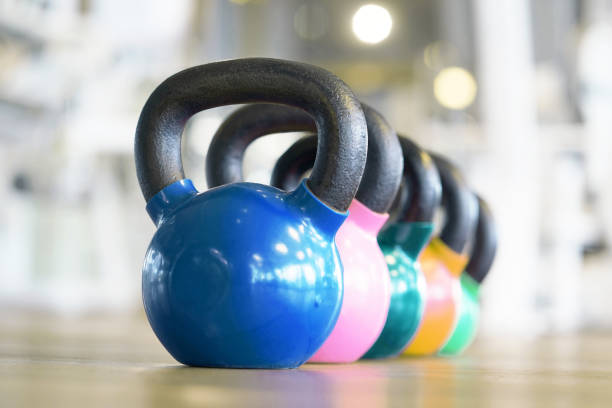
Our Recommended Starting Weights for Kettlebells
Okay, let's get to the good stuff – the weight recommendations you've been waiting for! 🎉
For Women:
- If you're completely new to kettlebells and weight training: 8kg (18lbs)
- If you have some weight training experience: 12kg (26lbs)
- If you're pretty darn strong: 16kg (35lbs)
For Men:
- Newbie status: 12kg (26lbs)
- Somewhat experienced: 16kg (35lbs)
- You lift, bro: 20kg (44lbs)
Of course, these are just general guidelines. Don't be afraid to adjust based on your own abilities and comfort level.
The goal is to start with a weight that challenges you, but still allows you to maintain proper form.

Standard Kettlebell Sizes and Weights
Kettlebells come in a range of weights, typically measured in kilograms (kg) or pounds (lbs).
Here are some standard sizes:
- For Women: 8kg (18lbs), 12kg (26lbs), 16kg (35lbs)
- For Men: 16kg (35lbs), 20kg (44lbs), 24kg (53lbs)
Your perfect starting weight may vary based on the factors above.

Best Starting Weight for Kettlebell Exercises
Now, let's talk specifics! Here are some recommendations for common kettlebell exercises:
🏋️♀️ Kettlebell Swing:
- Women: 8-12kg (18-26lbs)
- Men: 12-16kg (26-35lbs)
🏋️♂️ Kettlebell Squat:
- Women: 8-12kg (18-26lbs)
- Men: 12-16kg (26-35lbs)
💪 Kettlebell Press:
- Women: 4-8kg (9-18lbs)
- Men: 8-12kg (18-26lbs)
🔥 Kettlebell Snatch:
- Women: 4-8kg (9-18lbs)
- Men: 8-12kg (18-26lbs)
Remember, these are starting points. As you get stronger, you'll want to gradually increase the weight to keep challenging yourself.

Tips for Choosing the Right Kettlebell
Still feeling unsure? Here are some pro tips to help you pick the perfect kettlebell:
👩🏫 Work with a certified kettlebell instructor, at least initially. They can assess your form and recommend the right weight.
🏋️♀️ Try out different weights at a gym or store before buying. How does it feel? Can you maintain proper form?
💰 Invest in an adjustable kettlebell if you plan to increase weight frequently. It's more cost-effective than buying multiple bells.
🤔 When in doubt, start lighter. You can always go heavier, but lighter weights allow you to nail down technique first.
What Type of Kettlebell Should I Use?
There are a few different types of kettlebells, each with their own pros and cons:
- Cast iron kettlebells - The traditional style. These are durable and can withstand being dropped. Good for swings and ballistics. Heavier than other styles.
- Competition style kettlebells - Used for sport competitions. More consistent size and have a broader, flat bottom for easier storage when racked. Not great for swings.
- Adjustable kettlebells - Allows you to change weight with a dial. Convenient but can have durability issues long term.
Most experts recommend starting with a solid cast iron or competition style bell in a single weight rather than adjustable.
The set weight helps teach proper form.

What are the Standard Kettlebell Sizes?
Kettlebells are measured in weight, not volume.
The standard weights used are:
- 5 lbs (2 kg)
- 8 lbs (4 kg)
- 12 lbs (6 kg)
- 16 lbs (8 kg)
- 20 lbs (10 kg)
- 24 lbs (12 kg)
- 28 lbs (14 kg)
- 32 lbs (16 kg)
Weights then go up in 4 kg / 10 lb increments. Heavier kettlebells over 60 lbs may be measured in Russian measurements called poods. 1 pood = 16 kg or ~ 35 lbs.
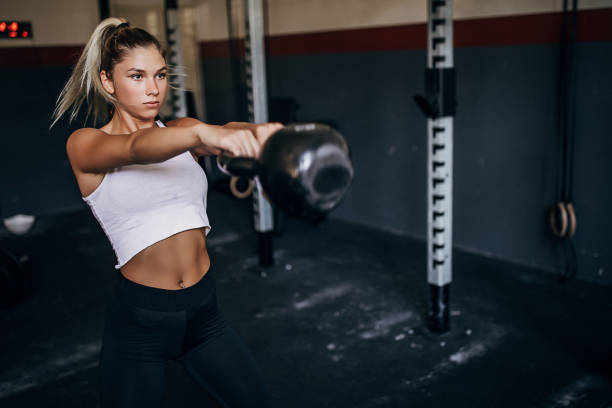
What’s the Best Kettlebell Weight for Women?
Most women new to kettlebell training should start with a 12-16 lb (5-8 kg) kettlebell.
If you have weight training experience, are athletic, or weigh over 160 lbs, you may be able to start with a 20 lb (10 kg) bell.
Here are general recommendations based on experience level:
- New to weight training: 8-12 lbs
- Some experience: 12-16 lbs
- Athletic or CrossFit: 16-22 lbs
- Advanced: 22-26 lbs
Always focus on good form rather than going too heavy too quickly. Proper technique is key to preventing injury.

What’s the Best Kettlebell Weight for Men?
The best starting weight for men is generally 16-26 lbs (8-12 kg) depending on fitness level and experience:
- Beginners: 16-22 lbs
- Some experience: 22-26 lbs
- Athletic: 26-32 lbs
- Advanced: 32+ lbs
If you're unsure, err on the side of a lighter kettlebell until your form is mastered. You can always progress up in weight.
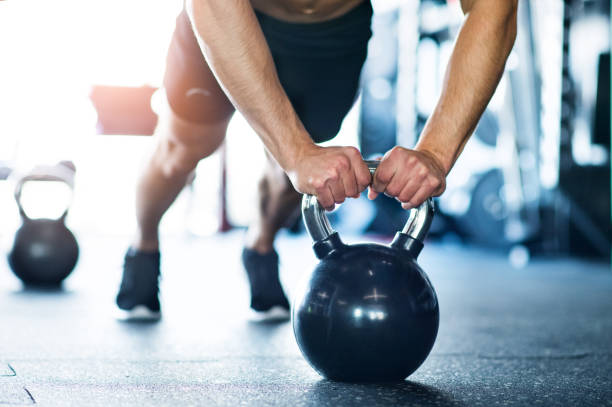
Listen to Your Body and Adjust as Needed
As with any new exercise program, it's essential to listen to your body. If the weight feels too heavy or light, don't be afraid to adjust.
The goal is to challenge yourself while maintaining proper form. 🙌
Remember, kettlebell training is a journey. Start slow, focus on technique, and gradually increase the intensity as you get stronger.
Before you know it, you'll be swinging those heavy bells like a pro! 💥
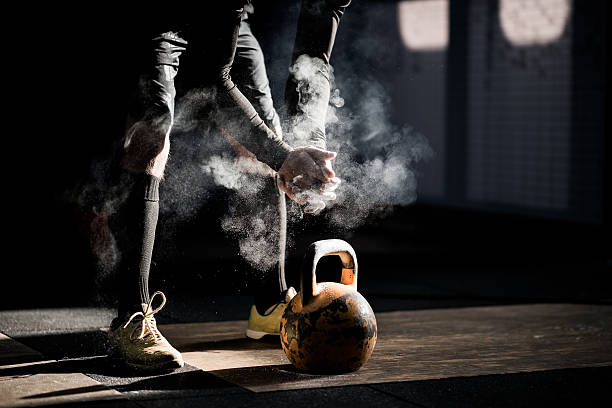
Tips for Increasing Weight Over Time
Once you've mastered your starting weight, it's time to level up! 🆙
Here are some tips for gradually increasing that kettlebell load:
- Use the "Goldilocks Method" – If a weight feels too light, go up. Too heavy? Go down. You want that "just right" challenge.
- Increase in reasonable increments (usually 4kg/8lbs at a time)
- focus on nailing form before adding weight
- Try a kettlebell "ladder" workout, moving up (or down) in weight for different sets/exercises
- Listen to your body! Never sacrifice form for a heavier weight.
- Be patient and trust the process. Slow and steady wins the kettlebell race.
Oh, and one last tip: Have fun with it! Kettlebells are like a full-body party. 🎉
Crank up the tunes, work up a sweat, and enjoy the journey.

How to Know if Your Kettlebell is the Right Weight
The right kettlebell weight challenges your muscles without being too difficult to control.
Here are some signs you've chosen the best weight to start with:
- Your arm doesn't collapse on the downswing of a kettlebell swing.
- You can maintain good form without shaking during arm movements like an overhead press.
- The weight is heavy enough that 10-15 reps of swings or lifts fatigue your muscles.
- You have a good grip on the handle without it slipping.
- You feel stable in your stance and balanced as you move through drills.
- You're able to keep proper alignment and engage your core during exercises.
The weight should feel somewhat hard, not too easy or impossible. You may be sore the next day but shouldn't feel like you're risking serious injury.
Listen to your body and adjust the weight up or down accordingly until you find the right challenge level.
Proper form is key.

Mistakes to Avoid When Choosing a Kettlebell
Some common mistakes to avoid when selecting your starting kettlebell weight:
- Starting too heavy - this can lead to bad form, strain, and injury.
- Choosing a weight based on ego rather than fitness level.
- Not starting light enough - you won't get maximum benefit if it's too easy.
- Skipping weight progression - increase weight as you build strength for continuous improvement.
- Not buying multiple weights for variation - buy at least two, 5-10 lbs different.
- Using poor form to handle a heavy weight - keep perfect technique above all else.
- Not considering your fitness goals - choose weight that aligns with your goals.
- Not evaluating your mobility - if shoulders or wrists are tight, start lighter.
- Trying advanced moves before you're ready - master basics like deadlifts first.
Remember that proper form should always be the priority, not how much weight you can lift. Start conservatively and increase weight slowly over time.

Beginner Kettlebell Workout Routines
Once you’ve chosen the right kettlebell weight, where do you start?
Here are some simple beginner kettlebell routines to safely learn movements and build a strength base:
Kettlebell Swing Workout
- 10-15 minute warm up
- 10 alternating single arm swings
- 10 double arm swings
- 5 Turkish get ups each side
- 10 goblet squats
- 10 alternating single arm swings
- 10 double arm swings
Kettlebell Deadlift + Row
- 10 minute warmup
- 10 kettlebell deadlifts
- 10 single arm kettlebell rows each side
- 10 double arm kettlebell rows
- 10 kettlebell deadlifts
- 10 suitcase carries (30-60 seconds each side)
Beginner Kettlebell Full Body
- Warm up joints + light cardio 5-10 min
- 8 kettlebell deadlifts
- 8 push presses
- 8 goblet squats
- 8 reverse lunges each side
- 8 kettlebell swings
- 8 single arm rows each side
- Repeat circuit 2-3 times
Key Takeaways:
- Consider your fitness level, sex, goals, and body weight when choosing a starting weight.
- Standard kettlebell sizes range from 4kg (9lbs) to 24kg (53lbs) and beyond.
- For most exercises, women should start with 8-12kg (18-26lbs), and men with 12-16kg (26-35lbs).
- Listen to your body, and adjust the weight as needed.
- Proper form is crucial – start light and gradually increase.
- Have fun, and enjoy the full-body benefits of kettlebell training! 🎉

FAQ To Help Choose a Kettlebell Weight To Start
What Size Kettlebell Should I Start With?
The size of the kettlebell you start with depends on your current fitness level and experience with weight training.
A good rule of thumb is to start with a lighter kettlebell and gradually increase the weight as you become more comfortable with the movements.
For beginners, a 12-16 lb (8-12 kg) kettlebell is often recommended.
Once you've mastered the basic techniques, you can progress to a heavier kettlebell.
What Is the Best Kettlebell for Beginners?
When starting with kettlebells, it's best to choose a high-quality, cast iron kettlebell with a comfortable grip.
Competition kettlebells are designed for specific movements and may not be ideal for beginners.
For most people, a basic cast iron kettlebell with a smooth finish is a great option for learning the fundamental exercises like swings, cleans, and presses.
How Much Weight Kettlebell Should I Use?
The weight of the kettlebell you use will depend on your fitness level, goals, and the specific exercises you plan to perform.
As a general guideline, women new to kettlebells may start with a 12-16 lb (8-12 kg) kettlebell, while men can begin with a 16-24 lb (12-16 kg) kettlebell.
It's important to focus on proper form and technique before increasing the weight.
What Is a Good Starting Kettlebell Weight?
A good starting kettlebell weight for beginners is typically around 12-16 lbs (8-12 kg) for women and 16-24 lbs (12-16 kg) for men.
However, this can vary based on your individual fitness level and experience.
It's best to start with a weight that allows you to maintain proper form while still providing a challenge.
What Is a Typical Kettlebell Weight for Women?
For women new to kettlebell training, a common starting weight is 12-16 lbs (8-12 kg).
As you become more experienced, you can progress to heavier weights like 18-26 lbs (12-16 kg).
Advanced female kettlebell lifters may use bells ranging from 26-44 lbs (16-24 kg) or more, depending on the exercise and their strength level.
What Is a Typical Kettlebell Weight for Men?
For men new to kettlebells, a starting weight of 16-24 lbs (12-16 kg) is often recommended.
As you gain experience and strength, you can move up to heavier weights like 26-35 lbs (16-20 kg) or more.
Advanced male kettlebell lifters may use bells ranging from 35-88 lbs (20-48 kg), depending on the exercise and their fitness level.
How Do You Use a Kettlebell Properly?
To use a kettlebell properly, focus on maintaining good form and technique throughout each exercise.
Start with a lighter weight until you have mastered the movement patterns. Engage your core, keep a neutral spine, and use your hips and legs to generate power.
Always keep the kettlebell close to your body and avoid arching your back or jerking the weight.
What Are the Benefits of Kettlebell Training?
Kettlebell training offers numerous benefits, including improved strength, power, endurance, and cardiovascular fitness.
The unique design of kettlebells allows you to perform dynamic, full-body exercises that challenge your core, balance, and coordination.
Kettlebell workouts can help burn a significant number of calories in a short amount of time.
What Weight Should I Start With for Kettlebells?
The weight you should start with for kettlebells depends on your fitness level and experience.
For most beginners, a good starting weight is around 12-16 lbs (8-12 kg) for women and 16-24 lbs (12-16 kg) for men.
It's important to choose a weight that allows you to maintain proper form and technique while still providing a challenge.
How Do I Choose the Right Kettlebell?
To choose the right kettlebell, consider your fitness level, goals, and the specific exercises you plan to perform.
Start with a lighter weight until you have mastered the movements, then gradually increase the weight as you become stronger.
Look for high-quality, cast iron kettlebells with a comfortable grip and a smooth finish. If you're unsure, consult with a certified kettlebell instructor or personal trainer.
What Are the Different Types of Kettlebells?
There are several types of kettlebells, including cast iron, competition-style, adjustable, and vinyl-coated.
Cast iron kettlebells are the most common and durable option, while competition-style kettlebells have a window design for specific exercises.
Adjustable kettlebells allow you to change the weight, and vinyl-coated kettlebells are often used for home workouts to protect floors.
What Is a Competition Kettlebell?
A competition kettlebell is a specific type of kettlebell designed for use in kettlebell sport competitions.
These kettlebells have a unique window or "plate-loaded" design, which allows for specific movements like the jerk and snatch.
Competition kettlebells are typically used by advanced kettlebell athletes and may not be suitable for beginners.
How Much Kettlebell Weight Should a Woman Use?
The kettlebell weight a woman should use depends on her fitness level and experience. For beginners, a good starting weight is typically 12-16 lbs (8-12 kg).
As you become more experienced, you can progress to heavier weights like 18-26 lbs (12-16 kg) or more.
Advanced female kettlebell lifters may use bells ranging from 26-44 lbs (16-24 kg) or higher, depending on the exercise and their strength level.
What Kettlebell Weight Should a Woman Use?
The kettlebell weight a woman should use depends on her fitness level and goals. For beginners, a good starting weight is typically 12-16 lbs (8-12 kg).
As you become more experienced, you can progress to heavier weights like 18-26 lbs (12-16 kg) or more.
Advanced female kettlebell lifters may use bells ranging from 26-44 lbs (16-24 kg) or higher, depending on the exercise and their strength level.
What Is the Best Kettlebell Size for Beginners?
The best kettlebell size for beginners is typically around 12-16 lbs (8-12 kg) for women and 16-24 lbs (12-16 kg) for men.
These weights allow you to learn proper form and technique while still providing a challenge. As you become more experienced, you can progress to heavier weights.
How Do I Go Up in Kettlebell Weight?
To go up in kettlebell weight, it's important to gradually increase the weight in small increments as you become stronger and more comfortable with the movements.
A common progression is to increase the weight by 4-8 lbs (2-4 kg) at a time.
Focus on maintaining proper form and technique as you increase the weight, and don't sacrifice form for heavier loads.
How Do I Choose the Best Kettlebell for Me?
To choose the best kettlebell for you, consider your fitness level, goals, and the specific exercises you plan to perform.
Start with a lighter weight until you have mastered the movements, then gradually increase the weight as you become stronger.
Look for high-quality, cast iron kettlebells with a comfortable grip and a smooth finish.
If you're unsure, consult with a certified kettlebell instructor or personal trainer.
What Is the Best Starting Kettlebell Weight?
The best starting kettlebell weight for beginners is typically around 12-16 lbs (8-12 kg) for women and 16-24 lbs (12-16 kg) for men.
These weights allow you to learn proper form and technique while still providing a challenge.
As you become more experienced, you can progress to heavier weights.
What Weight Kettlebell Should I Use for My Level?
The weight kettlebell you should use depends on your fitness level and experience. For beginners, a good starting weight is typically 12-16 lbs (8-12 kg) for women and 16-24 lbs (12-16 kg) for men.
As you become more experienced, you can progress to heavier weights like 18-26 lbs (12-16 kg) for women and 26-35 lbs (16-20 kg) for men.
Advanced kettlebell lifters may use even heavier weights, depending

My Journey with Kettlebells: A Personal Trainer's Perspective
As a personal trainer, I’ve always sought out the most effective and engaging ways to help my clients achieve their fitness goals.
One of the most transformative tools I’ve integrated into my routines is the kettlebell.
The versatility and effectiveness of training with kettlebells cannot be overstated. Whether you’re new to kettlebells or an experienced lifter, incorporating these unique weights into your workout can revolutionize your fitness journey.
Discovering the Power of Kettlebells
My first encounter with kettlebells was about a decade ago.
I had heard about kettlebell lifting but hadn’t really explored it until a colleague suggested I try it. I started with a basic 16 kg kettlebell, and I was hooked.
The movements felt natural, yet they provided a full-body workout that I hadn’t experienced with other equipment.
I quickly learned that a set of kettlebells can replace an entire gym’s worth of equipment.

Choosing the Right Kettlebell
When buying a kettlebell, it’s crucial to choose the right weight for your needs.
For beginners, the best kettlebell weight is typically between 8 kg and 16 kg.
Women often ask, "What weight kettlebell should a woman use?"
Generally, a 8-12 kg kettlebell is a good starting point, but it varies based on individual strength levels.
Men usually start with a 16-24 kg kettlebell.
The key is to go up in weight as your strength increases.
Understanding Kettlebell Movements
Kettlebell movements are dynamic and can be incredibly effective for building strength and endurance.
Basic kettlebell movements like kettlebell swings, Turkish get-ups, and goblet squats are excellent for beginners.
When holding the kettlebell, ensure your grip is firm but not overly tense. This helps stabilize the weight and prevent injury.
The Benefits of Kettlebells
One aspect of kettlebells I love is their ability to engage multiple muscle groups simultaneously. When you use kettlebells, you’re not just working one muscle; you’re performing compound movements that engage your core, legs, arms, and back.
This makes kettlebell exercises like swings and snatches incredibly efficient.
For those wondering about the variety of kettlebell exercises, the options are endless.
From using one kettlebell to combining two kettlebells for more complex movements, there’s always a new challenge.
If you’re new to kettlebells, start with basic movements and gradually incorporate more complex routines.
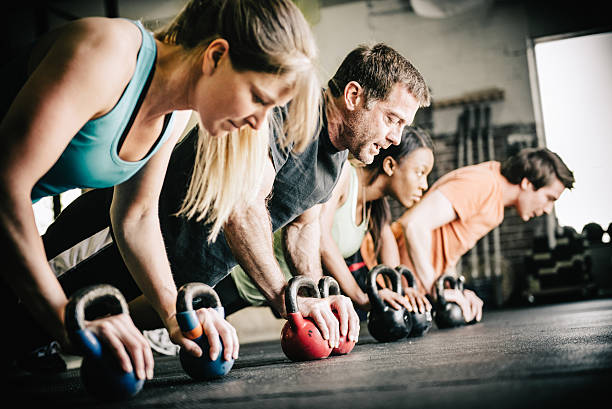
Training with Different Kettlebells
Training with kettlebells offers a unique challenge due to their shape and the way they are used.
Unlike traditional dumbbells, the weight of a kettlebell is off-center, requiring more stabilization and engaging more muscle groups.
This makes the kettlebell a fantastic tool for both men and women looking to build functional strength.
When buying the right kettlebell, consider the Russian measurement of weight, which often uses kilograms instead of pounds.
Most kettlebells on the market are available in a variety of weights, so finding the right set of kettlebells for your needs is straightforward.
Remember, the heaviest kettlebell isn’t always the best; it’s about choosing the right weight to use based on your current fitness level.
My Personal Routine
My routine usually involves a mix of kettlebell exercises that target different muscle groups. I often start with kettlebell swings to warm up, followed by cleans and presses.
Using at least two kettlebells, I perform double swings and front squats to enhance my strength and stability.
I find that holding the kettlebell in different positions also helps improve my grip strength and endurance.
For More Training Advice + Diet and Lifestyle visit us Combat Creatine
PS: Make sure you check out the rest of our Training Guides:
Creatine
Creatine Supplements Ultimate Guide
Creatine Supplementation Side Effects
Best Creatine Monohydrate Gummies Review: Top 10 Best Creatine Gummies
Triceps
12 Best Long Head Tricep Exercises + Tricep Workout Ideas
Top 17 Tricep Extension Exercises | Triceps Extension Variations Guide
Perfecting the Triceps Pushdown: Tricep Pushdown for Upper Body Strength
10 Best Medial Head Tricep Exercises -Combat Creatine10 Best Lateral Head Tricep ExercisesThe Best Triceps Stretches to Loosen and Improve Flexibility
Understanding Triceps Tendonitis: Causes, Diagnosis, and Treatment for Elbow Pain
Tricep Dips Exercise Guide: Master The Triceps Dip
30 Best Tricep Exercises | Review The Best Triceps Exercises
Are Triceps Push or Pull? Push-Pull Workout
Biceps
12 Best Bicep Tendonitis Exercises | Biceps Tendon Treatment
The 10 Best Kettlebell Bicep Exercises for Bigger, Stronger Arms
The 14 Best Resistance Band Bicep Exercises | Top Biceps Resistance Band Exercises
The 14 Best Short Head Biceps Exercises | Short Head Bicep Exercise Workout
17 Best Long Head Bicep Exercises | Top Biceps Exercise
The 20 Best Bicep Exercises | Best Biceps Exercise & Bicep Workout
Get Stronger Biceps with a Bicep Curl Machine
Chest
13 Cable Chest Exercises to Build Bigger Pecs
The Spoto Press: How This Unique Bench Press Variation Can Boost Your Bench
The 10 Best Chest Exercises for Building Muscle
10 Best Dumbbell Chest Exercises for Building Your Pecs
The 5 Best Chest Exercise Machines for Maximum Growth in 2024
5 Best Compound Chest Exercises for Building a Bigger Chest
16 Best Kettlebell Chest Exercises: Pump Up Your Pecs
5 Best Chest Workout Machines for Maximum Muscle Growth
6 TRX Chest Exercises for a Bigger Chest - Best TRX Workout!
14 Common Chest Expander Exercises
Back
10 Best Cable Back Workout Exercises
10 Best Kettlebell Back Exercises & Back Workout
5 Best Calisthenics Back Exercises + Calisthenics Back Workout
5 Best Lower Back Exercises + Best Back Exercises Machines
Top 10 TRX Exercises To Build A Stronger Back
10 Best Resistance Band Back Exercises + Back Workout
11 Best Landmine Exercises For Back & Upper Body
15 Best Smith Machine Back Exercises
Top 3 Back Exercises For A Stronger Back: Build Size And Strength
The Complete Helms Row Guide | Form, Muscles Worked, and Benefits
How to Do the Lat Spread Pose Like a Pro Bodybuilder
Shoulders
The 10 Best Cable Shoulder Workouts & Cable Shoulder Exercises
Shoulder Impingement Exercises For Shoulder Impingement Syndrome
8 Best Shoulder Bursitis Exercises
16 Best Cable Shoulder Exercises To Build Muscle & Shape Delts
10 Best Shoulder Dislocation Rehab Exercises
Shoulder Calisthenics Workout | Bodyweight Shoulder Workout
10 Best trx shoulder exercises | TRX Suspension Training
5 Frozen Shoulder Exercises For Pain Relief
Around the World Shoulder Exercises + Workout
8 Best Compound Shoulder Exercises
Supraspinatus Stretch: Your Supraspinatus Muscle & Rotator Cuff
Legs
9 Compound Leg Exercises | Best Compound Exercises For Lower Body
12 Best Kettlebell Leg Exercises | Leg Workout
Best 18 Calisthenics Leg Exercises | Calisthenics Leg Workout
Best 10 TRX Leg Exercises For Lower Body | TRX Leg Workout
10 Single Leg Exercises to Build Explosive Leg Strength
8 Best Hack Squat Alternatives That Target Your Quads
Easy Wall Exercises For Legs | Wall Workout
8 Best Landmine Exercises | Landmine Leg & Lower Body Workout
The Best Leg Strengthening Exercises for Seniors
Leg Press Machine Exercise | Ultimate Leg Press Workout Guide
Glutes
7 Best Lower Glute Exercises for Building the Perfect Underbutt
The 8 Best Gym Machines For Glutes | Best Glute Machine Review
8 Best Dumbbell Glute Exercises & Glute Workout
The 11 Best Cable Glute Exercises: Cable Exercises To Build Your Booty
10 Best Compound Glute Exercises | Compound Exercises
7 Best Kettlebell Glute Workouts | Kettlebell Exercises For Glutes
9 Best Unilateral Glute Activation Exercises | Lower Body Unilateral Exercises
